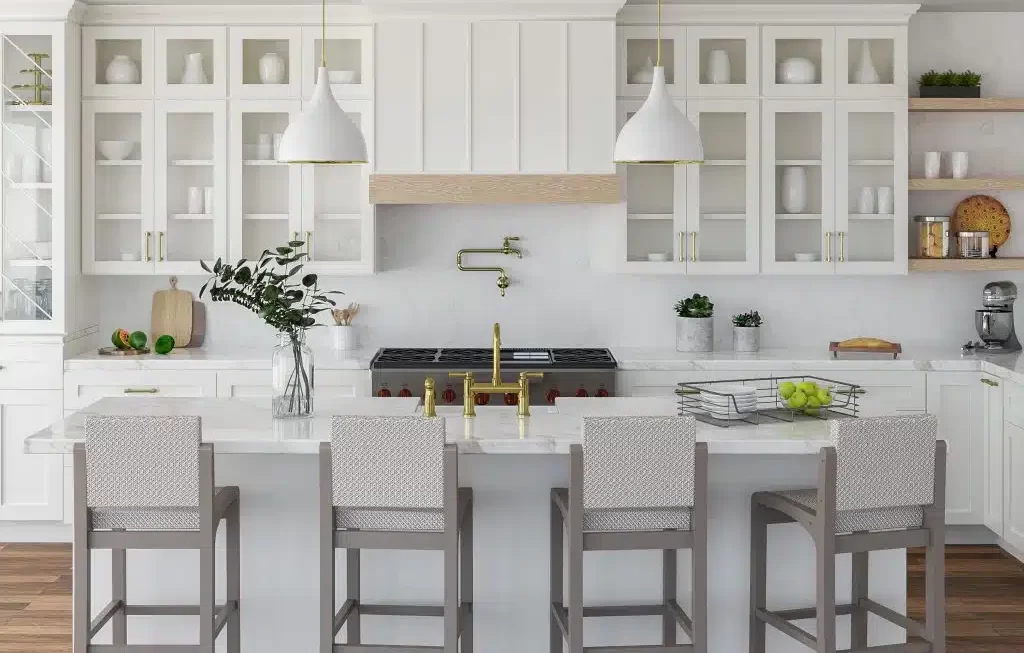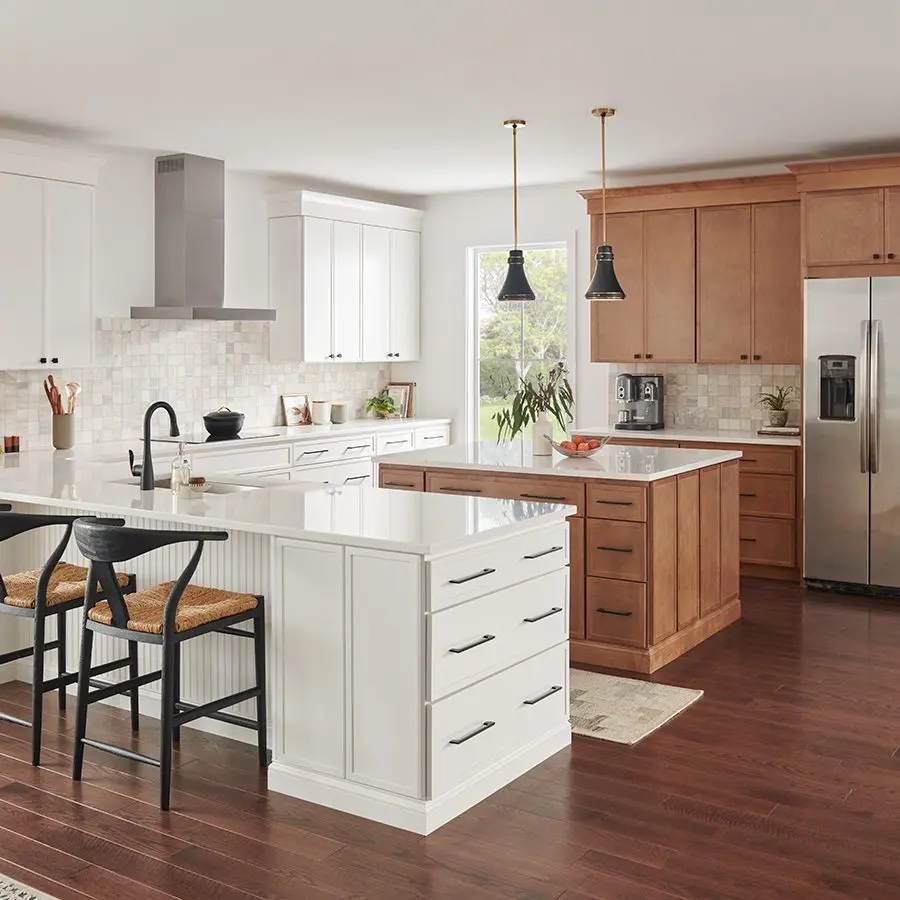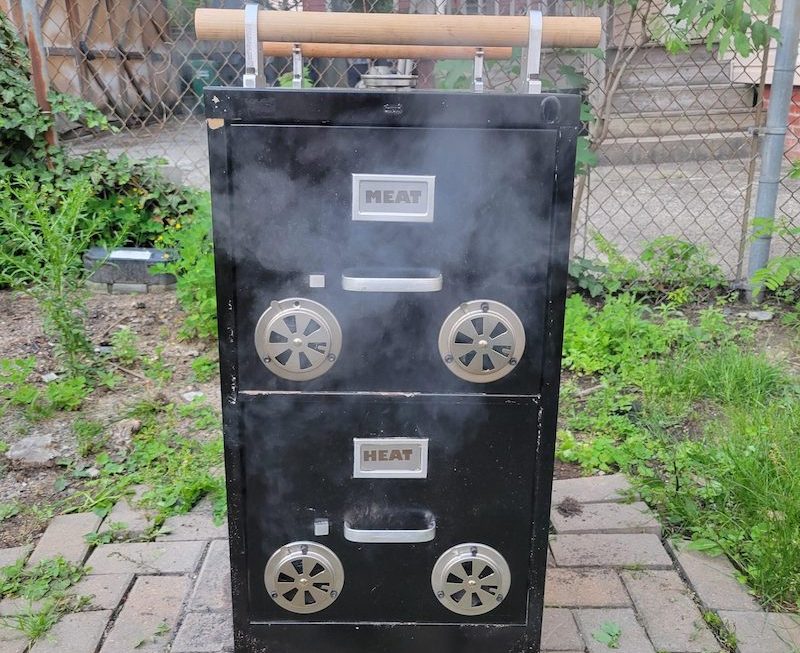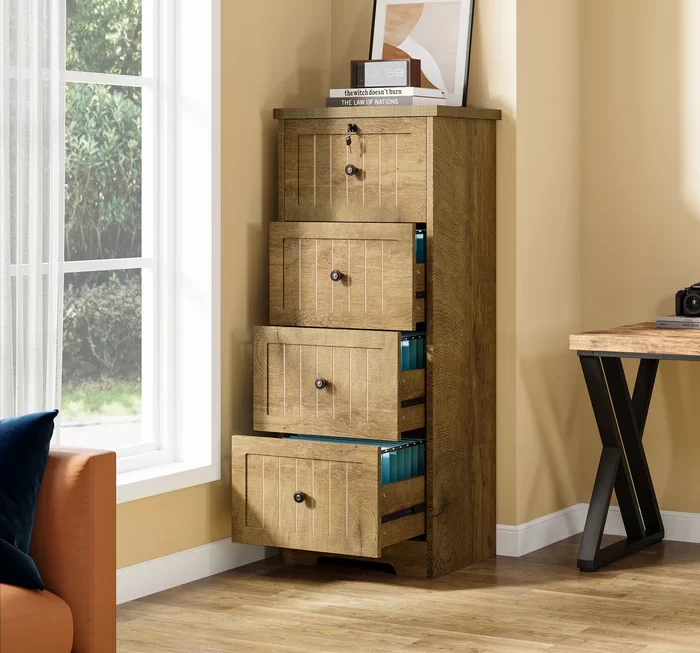The Basics of Kitchen Cabinet Definition
Kitchen cabinet definition is essential component in any kitchen’s design and functionality. They provide storage space for cooking tools, ingredients, and dishes. Typically installed at or near eye level, these cabinets are both accessible and space-efficient.
Functionality aside, kitchen cabinets also significantly influence the kitchen’s overall aesthetic. They occupy a large part of the visual space and thus dictate much of the kitchen’s style and atmosphere. Understanding the basic structure and purpose of these cabinets is crucial for any homeowner or designer planning a kitchen layout or renovation.
Essentially, all kitchen cabinets consist of the cabinet box, shelves within the cabinet, and doors or drawers on the front. The cabinet box is usually fixed to a wall or floor, providing the structural foundation. Shelves and compartments inside help organize kitchen items efficiently, while doors and drawers conceal the contents and assist in maintaining a tidy appearance.
In definition, kitchen cabinets are built-in furniture pieces designed for storage and accessibility in a kitchen setting. This understanding opens up avenues to explore different styles, materials, and innovative designs tailored to specific kitchen needs and aesthetics.
Different Styles of Kitchen Cabinet Definition
When planning your kitchen, choosing the right cabinet style is key to the room’s overall feel. Cabinets can be traditional, with ornate moldings and classic lines. More modern styles feature sleek, straight edges and a minimalist look. Transitional cabinets blend both features for a balanced feel.
Among the popular styles are Shaker, which is known for its simplicity and utility. Flat-panel cabinets, or slab-door style, offers an uncluttered and contemporary look. For a more luxurious feel, inset cabinets fit inside the cabinet frame, showing precise craftsmanship.
Country or farmhouse cabinets can bring a cozy, rustic charm to your kitchen. They often include beadboard or glass-front doors for a homely touch. On the edgier side, industrial-style cabinets might use mixed materials and exposed hardware, reflecting an urban vibe.
The cabinet style you choose can define your kitchen’s character. Ensure it matches your home’s overall theme and your personal taste. Mixing and matching different styles might also create a unique look that stands out.
In conclusion, the kitchen cabinet definition spans a range of styles. These styles cater to various aesthetics and practical needs in kitchen design. Your choice will reflect your personality and the kind of atmosphere you want to create in your kitchen.
Materials Used in Kitchen Cabinet Construction
When building kitchen cabinets, different materials impact their look and durability. Wood remains the most used material due to its versatility and warmth. Popular wood types include oak, maple, and cherry, each known for its unique grain patterns and color.
Besides wood, engineered wood products like plywood, MDF (Medium Density Fiberboard), and particle board are also common. These materials provide stability at a lower cost, and they resist warping better than natural wood.
For a modern look, stainless steel or aluminum frames bring a sleek, industrial aesthetic. These metal options are durable, resistant to rust, and easy to clean. Glass elements in kitchen cabinetry are another trend. They add visual interest and make spaces appear larger by reflecting light.
Laminates and thermofoil (a type of plastic finish) offer colorful and affordable alternatives to natural materials. They stand up well to staining and are easy to maintain.
Each material affects the kitchen cabinet’s durability, maintenance, and style. Selecting the right one aligns with the desired aesthetic and practical functionality of your kitchen space.
Understanding Cabinetry Functionality
Understanding the functionality of kitchen cabinets is as important as their style. Storage and accessibility are the core functions that cabinets must serve in any kitchen. Here is how functionality comes into play with cabinetry design:
Accessibility
Cabinets are placed where they can be easily reached. Lower cabinets are ideal for heavier items, like pots and pans. Wall cabinets are good for frequently used dishes and ingredients. Everything must be within arm’s reach to make cooking and cleaning more efficient.
Organizational Efficiency
Well-designed cabinets help keep your kitchen organized. They can have built-in dividers, lazy Susans, and pull-out racks. These features make the best use of space and keep items tidy.
Space Optimization
Modern cabinetry is all about optimizing space, especially in smaller kitchens. Corner cabinets with clever storage solutions ensure no space is wasted. Tall cabinetry can offer additional storage vertically, making use of the kitchen’s full height.
Safety and Convenience
Cabinetry should protect items from dust and damage. Soft-close hinges prevent slamming and reduce noise. Locks and child-proofing features add an extra layer of safety in homes with young children.
Adaptability
Cabinetry should be adaptable to changing needs and trends. Adjustable shelves and modular components allow you to rearrange storage spaces. This adaptability is crucial for the cabinet’s long-term functionality.
Cabinets are more than just storage units; they are an integral part of kitchen workflow. Choose cabinets that meet your specific needs for functionality and design. Remember, the most efficient kitchens blend the best of both.
Custom vs. Stock Cabinets: Which Is Right for You?
When planning a kitchen renovation or build, one major decision is choosing between custom and stock kitchen cabinets. This choice impacts both the budget and the final look of your kitchen.
Custom cabinets are built to order, offering more flexibility in design. You can choose specific styles, materials, and configurations to fit your space and style precisely. They are perfect for fitting into unusually shaped spaces or for creating a unique look. However, custom cabinets are generally more expensive and take longer to produce.
Stock cabinets are pre-manufactured in standard sizes and limited styles. They are more budget-friendly and can be quickly installed, as they are readily available from suppliers. Stock cabinets work well in standard kitchen layouts and are a practical choice if you’re not looking for something highly customized.
Key Points to Consider:
- Budget: Stock cabinets are less costly than custom options.
- Time: Custom cabinets take more time to design and build.
- Flexibility: Custom cabinets offer more freedom in terms of design and fitting.
- Availability: Stock cabinets are readily available and can be installed quickly.
The decision between custom and stock kitchen cabinets depends on your specific needs, budget, and timing. Weigh these factors carefully to choose the best option for your kitchen.
Color and Finish Trends in Kitchen Cabinet Definition
Choosing the right color and finish for your kitchen cabinets can transform the space’s look and feel. Trends in cabinetry color and finish evolve, but certain themes remain popular due to their timeless appeal. Here’s what’s currently trending:
Popular Cabinet Colors
Neutral tones like white, grey, and beige have long been favorites for kitchen cabinets. These colors create a clean and spacious feel. They work well in most kitchen styles, from modern to traditional. Dark hues, such as navy blue or forest green, add drama and depth. For those with a bold sense of style, vibrant colors like red or yellow make a strong statement.
Trending Finishes
Matte finishes give cabinets a contemporary look and hide fingerprints well. Gloss finishes reflect light, making the kitchen appear brighter and larger. A satin finish strikes a balance, with a soft sheen that’s easy to clean. Wood stains vary from light to dark, highlighting the natural grain of the wood.
Mixing Colors and Finishes
Mixing cabinet colors and finishes can add interest to your kitchen. For example, contrasting upper and lower cabinets or combining a bold color with a neutral. Finish combinations also work well, such as matte on lower cabinets and gloss on upper ones.
Painted vs. Stained Cabinets
Homeowners must decide between painted and stained cabinets. Paint offers a wide range of colors and a uniform look. Stain showcases wood’s natural beauty and offers a warm, inviting feel. Your choice should align with the overall design and atmosphere you wish to create.
Remember to consider the kitchen cabinet definition when selecting colors and finishes. They must be functional, fitting with your kitchen’s aesthetic and practical needs. Always choose trends that resonate with your personal style for a kitchen that you’ll love for years to come.
Incorporating Smart Storage Solutions in Cabinets
Incorporating smart storage solutions into kitchen cabinet definition is key to maximizing efficiency and convenience. Here are several ways to achieve this:
Pull-Out Shelves and Baskets
Pull-out shelves and baskets improve accessibility. They let you see and reach everything without digging to the back.
Spice Racks and Door Organizers
Door-mounted spice racks save space. They keep spices and small jars within easy reach, making cooking streamlined.
Under-Sink Drawers
Drawers designed for under-sink storage utilize often wasted space. They make it easier to access cleaning supplies.
Corner Cabinet Solutions
Solutions for corner cabinets, like lazy Susans or swing-out shelves, prevent items from getting lost in hard-to-reach spots.
Vertical Dividers
Vertical dividers organize items like cutting boards and baking sheets. They help maintain order and make good use of narrow spaces.
Customizable Drawer Dividers
Adjustable or customizable drawer dividers allow for personalized organization. They keep utensils and small gadgets tidy and sorted.
Integrated Trash and Recycling Bins
Cabinets with built-in trash and recycling bins keep waste hidden. This maintains a cleaner look and saves floor space.
Smart storage solutions are part of the kitchen cabinet definition, enhancing functionality and style. They turn ordinary cabinets into highly organized spaces that work for your unique needs. When selecting your kitchen cabinetry, consider these innovative features for a truly efficient kitchen layout.
The Role of Hardware in Kitchen Cabinet Definition and Utility
The hardware of kitchen cabinets plays a crucial role in both design and functionality. From handles and knobs to hinges and drawer slides, these elements are the finishing touches that can complement your kitchen’s style while also ensuring your cabinets function smoothly and reliably. Here’s how hardware can impact your kitchen cabinetry:
Choosing the Right Hardware Style
Selecting the right hardware style can reinforce the overall look of your kitchen. Sleek, stainless steel handles might enhance a modern aesthetic, whereas ornate bronze knobs could be perfect for a traditional setting. The style of hardware should match the vibe of your cabinets to create a cohesive design.
Functionality is Key
It’s not just about looks – hardware has to be functional. Soft-close hinges prevent noisy slams, and full-extension drawer slides allow complete access to drawer contents. These practical choices enhance the daily use of your kitchen.
Durability Matters
Cabinet hardware gets a lot of use, so it needs to be durable. Quality materials like solid brass or die-cast zinc can withstand the wear and tear of frequent use. Opt for hardware that feels sturdy and operates smoothly.
The Touch of Comfort
Comfort is an often overlooked aspect of cabinet hardware. Handles and pulls should feel comfortable in your hand, as they will be used many times a day. Ergonomic designs can significantly improve the user experience.
Safety Considerations
Hardware can also contribute to kitchen safety. Choose hardware with smooth edges and a secure fit to help prevent accidents. In homes with children, consider hardware that’s compatible with safety locks to keep hazardous items out of reach.
In sum, hardware is more than just decorative. It’s an integral part of the kitchen cabinet definition and requires careful selection for both aesthetic appeal and practical utility. By considering style, functionality, durability, comfort, and safety, you can choose hardware that completes your kitchen cabinet definition perfectly.






